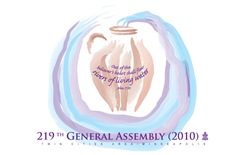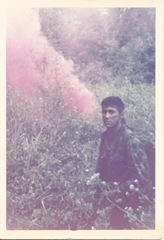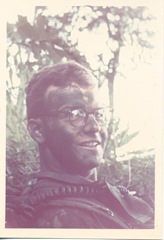Lutheran CORE prepares for its August Convocation when it will birth a new denomination called the North American Lutheran Church (NALC). The WordAlone Network has become WordAlone Ministries and has revised its strategy away from influencing the ELCA toward supporting dissidents, but with an apparent tilt toward CORE and its progeny, prompting a Lutheran Congregations in Mission for Christ (LCMC) supporter to whine, “I thought that Word Alone was going to be supporting both LCMC and NALC.” Meanwhile, the LCMC eagerly welcomes the vast majority of defecting ELCA congregations into its loose association while sniping at the anticipated high church structure of NALC: “ … this is why I am glad to be LCMC … Among the members of the [NALC] Ministry Processes Working Group are six former ELCA bishops,” and “We certainly don’t need any more rings to kiss.” At local congregations pondering defection from the ELCA, dueling representatives of LCMC and CORE make appearances to advocate for their preferred brand of schism. (LCMC quotes from “Friends of LCMC”, a Google online discussion group)
Meanwhile, in central Minnesota, the local newspaper is running a letter to the editor that wonders why such a small percentage of eligible voters actually voted in two local congregations that voted to sever ties with the ELCA.
[P]erhaps the support for leaving the ELCA wasn’t quite as overwhelming as the church leadership might have people believe.
The writer then questions the level of pastoral manipulation behind the process:
[D]ecisions are often made based upon information shared with the members through the pastor. Indeed, the direction that any church takes often reflects the direction the pastor wishes to take that congregation. Truly, if only one point of view is presented to the congregation through the pastor and the elders of the church, and contrasting views aren’t embraced or encouraged, it would stand to reason that the church membership would vote in line with the church leadership.
One day when the smoke clears, it will be interesting to correlate pastoral leadership and congregational defections. From the evidence available thus far, it would appear that defecting congregations almost always are led out of the ELCA by their pastor. Talk about shepherding the flock.
Finally, the latest statistics from the ELCA (June 3) are reported in an email received from the office of the ELCA Secretary:
As of June 3, we have been advised that 419 congregations have taken first votes to terminate their relationship with the ELCA (some congregations have taken more than one first vote). Of these 419 congregations that have taken first votes, 283 passed and 136 failed. Synods also have informed the Office of the Secretary that 161 congregations have taken a second vote, 140 of which passed and 21 failed.
I have previously characterized the number of defecting congregations as a trickle and not a torrent. Ten months after CWA09, that characterization still holds true, and the vast majority of the 10,400 congregations of the ELCA remains in place. While the dissidents have stirred up hard feelings and created conflicted congregations, they are far from “realigning North American Lutheranism” as CORE professes.
As we approach the the birthing of NALC and the one year anniversary of CWA09, it will be curious to watch the strains on the publicly professed coalition of LCMC, WordAlone, and CORE. A commenter on the “Friends of LCMC” discussion groups suggests:
Where much of the 20th century was spent with “mergers”, bringing many smaller synods into one large tent, the early years of the 21st century are being marked with many of these mergers being “undone” in a way, with smaller synods once again emerging, each with its own unique polity and structure to it.
Reminds me of the old saw, “if you keep leaving a church to find another that is a perfect fit, soon you will be a church of one.”








